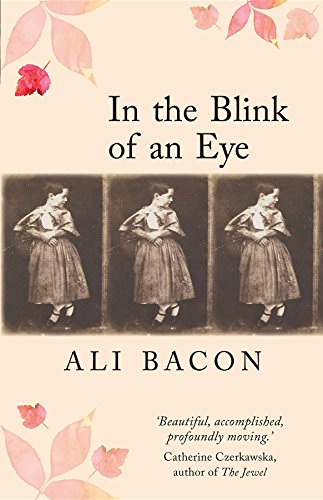I made an appeal in The Record some months ago for Christian artists and writers to produce works that are more relevant to the secular world. In the Blink of an Eye is that rarest of creatures, a secular novel that is particularly relevant to the Church, and the Free Church in particular.
It’s 1843, and DO Hill makes a generous but somewhat short-sighted offer to the elders of the newly emergent Free Church to paint a mass portrait recreating the Disruption. Twenty years later, he’s still at it, and wishing he’d never started. The intervening years are narrated by a series of women on the periphery of his life, several of which are apparent candidates to be the next wife of the widowed painter. And looming over the whole narrative is the process of calotyping (a form of early photography), with its difficulties and potential and unique ability to show the truth.
I mentioned the book is secular (the writer, Ali Bacon, is more interested in the artistic process than in the Disruption), and an early chapter through the eyes of a Free Church minister doesn’t ring quite true – but the finale, returning to that minister’s thoughts, bring home a beautiful message about identity in Christ and his ability to reward the faithful far above what the world can offer.
Blink of an Eye is published by Linen Press, a brilliant small publisher. The book is as well-written as I’ve come to expect from them, though the editing is not as sharp as it might be, and a few anomalies in grammar, names and dates might niggle a careful reader. Similarly, I think Ms. Bacon may have fallen into the very common trap of ascribing too-modern sensibilities to women of another time. There is little for a mature Christian reader to object to, but it should be stated the women in the novel are certainly aware of, and in a number of cases seeking, what might then have been called marital pleasures. Well, human nature doesn’t change, but culture does, and I suspect that the well-bred 19th-century Edinburgh lady was too naïve to know there was anything much to be pleased about!
If that is a criticism, it’s only a byproduct of one of the novel’s great strengths: the setting is so vivid it feels like Ms. Bacon has visited the past, and the characters, while based on historical figures, are fully fleshed out. No doubt that requires some writing in the blanks between what can be surmised from their letters and other historical sources. Ms Bacon blurs the line between fact and fiction so that one is constantly wanting to look up the people and places described and find out more, which is a brilliant characteristic of any novel. Particularly beautifully drawn was the difficult second marriage of the eccentric architect James Gowans. Relationships in this novel are always something fleeting, something to be nurtured carefully or embraced for a time. Like the calotypes of the hundreds of ministers, each individual is considered primarily alone in her own frame.
In short, I recommend In the Blink of an Eye to any readers who appreciate good history and even better writing.
This book is available to purchase from Linen Press.
Dayspring MacLeod, Record columnist

